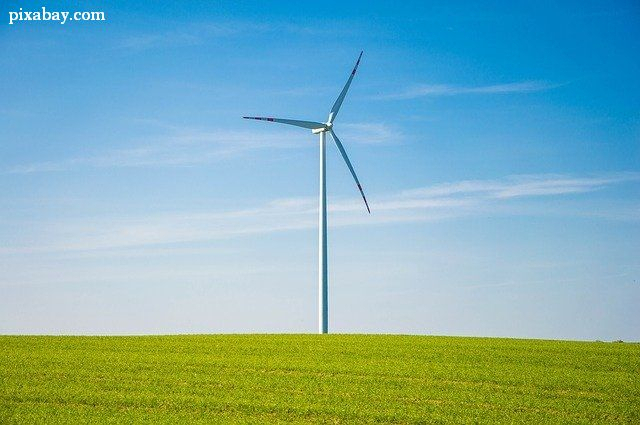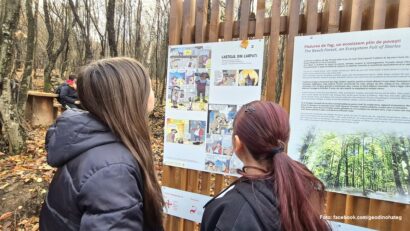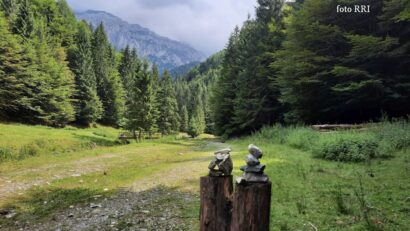Romania’s Wind Power Potential
The existing onshore wind capacity in Romania could allow the generation of twice the amount of electricity than the current consumption

Eugen Coroianu, 28.12.2023, 18:50
The existing onshore wind capacity in Romania could allow the generation of twice the amount of electricity than the current consumption. Even with the existing spatial constraints, and having an approach oriented towards optimizing the financial efficiency of the projects, we can generate approximately 123 TWh by harnessing the potential of just five counties. The data are contained in a recent study, analyzed by Ioana Csatlos – General Manager for EfdeN – an NGO specialized in urban regeneration, energy efficiency, and green architecture. The energy mix for electricity production in Romania looks quite balanced, with hydro production supplying 32%, followed by nuclear (20%), hydrocarbons (17%), coal (15%), wind (13%), solar (2%), and biomass (1%). These data, provided by the Transelectrica company, still indicate a quite high share of production based on fossil fuels, with coal and hydrocarbon power plants being responsible for a total contribution of around 32%. However, we also see a fairly important share of electricity coming from wind sources. This fact is due to the existing wind capacity in Romania, and the objective set by Romania for 2030 regarding the generation of electricity from wind sources, of up to 54%. Given this context, it is useful to ask how much we can still increase wind generation and where these resources are. A study published by the Austrian Institute of Technology (AIT) in October 2023 details the exact places where the location of wind turbines would not only allow the exploitation of an important energy potential, but would also take into account spatial limitations (such as protected natural areas, built environments, points with network access etc).
Here is Ioana Csatlos: “The discussion is about how to do this, how to produce wind power without affecting the natural environment. And here I would like to discuss perhaps three aspects: the first is the predictable and transparent legal framework, because the establishment of a detailed and durable legislation can, of course, attract international or national, maybe even local, investments. And this would be a major factor in the decision to invest in Romania in such projects. Secondly, of course, there is protection of biodiversity, which surely must not be neglected, but it must be carried out with the involvement of experts, specialists, to be able to ensure that we minimize this negative impact on nature. Because there are in question the migration corridors of birds, their habitats, which can be affected if we dont do it right, with the involvement of specialists. And thirdly, what seems to us very important would be the involvement of local communities, because here we can talk about the footprint of these projects, maybe even the visual footprint, and I think that the transmission of the benefits and, I dont know, maybe the development of co-participation schemes with direct benefits for the local community – economic, social – could increase this participation. Because people would understand better what it is about. And, of course, in order to make decisions embraced by the majority, all actors should be involved and consulted, and understand both the constraints and the benefits. If we sit together at the same table, so to speak, I think we can find solutions that in the long run will allow us to use modern technology without affecting future generations. Were talking about sustainability, after all.”
When discussing wind potential we have to take into account two important technical aspects: the potential – how much wind is blowing and the Full Load Hours (FLH) indicator – the total number of working hours / energy production in a year. Having these indicators as the basis of the analyzes made, but also many others, those from the AIT, highlight five counties in Romania with a significant potential for the development of projects of this type. Here, even in the most pessimistic scenario in terms of production potential, we cover twice the current electricity consumption of the whole of Romania. But this indicates that we can talk about a harnessing of the onshore wind potential that takes into account all the important aspects (bird migration routes, natural protected areas, agricultural regeneration), and still allows generation to increase in a substantial way. In addition, Ioana Csatlos writes, the price simulations show that, if we prioritize and exploit the wind potential, the electricity obtained will be cheaper. All these calculations refer to onshore wind turbines, without taking into account the offshore potential in the Black Sea. Recently, the Bucharest government took an important step in the direction of promoting renewable energy, by approving the draft Law on Offshore Wind Energy, which was sent to Parliament for adoption.
According to a press release from the Ministry Energy, The adoption of a legislative framework for starting the exploitation of Romanias offshore wind resources is a vital step in ensuring the energy independence and resilience of the country, being, at the same time, a commitment in the National Recovery and Resilience Plan.. According to the quoted source, World Bank data show that Romania has an offshore wind potential of 76 GW of installed power, being a favorable environment for the development of this type of renewable energy. Through this project, Romania is making progress in achieving the desired transition and decarbonization of its energy system, as well as in consolidating its status as a regional leader in the energy field. We are talking about investments of billions of euros, says the Minister of Energy, Sebastian Burduja. He specified that, in the drafting of this law, the Romanian specialists consulted, among others, the US State Department, as well as European countries, such as the Netherlands.






























